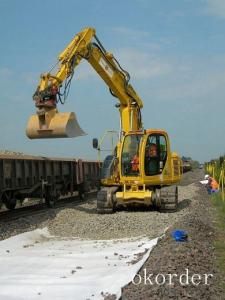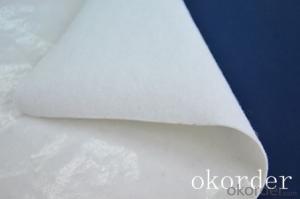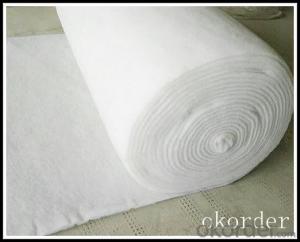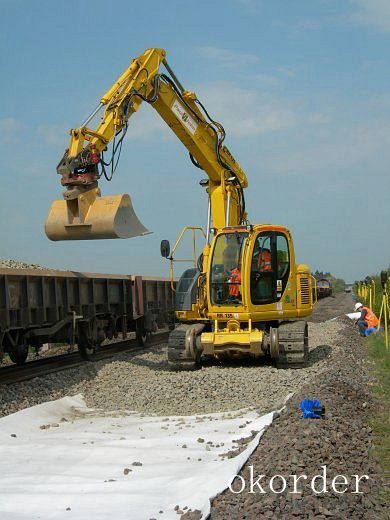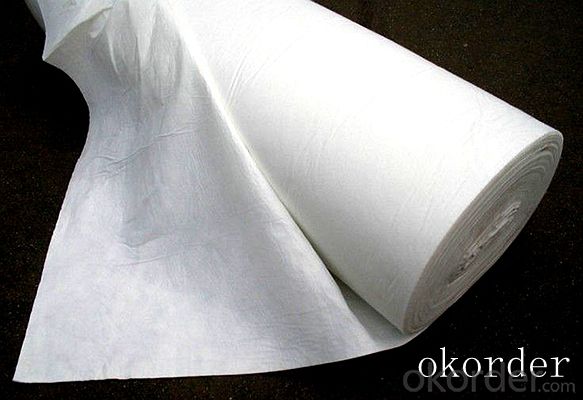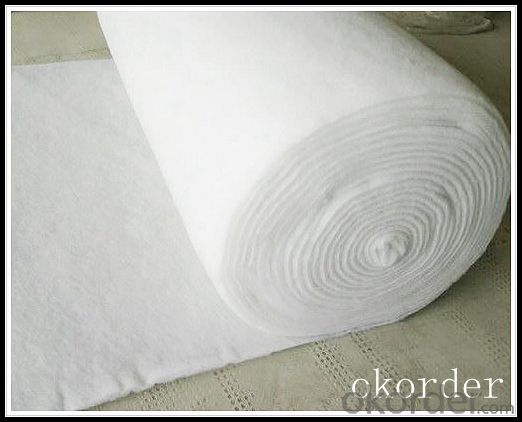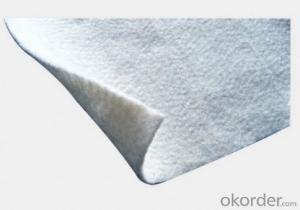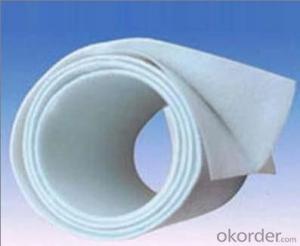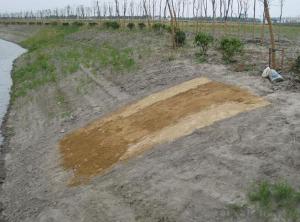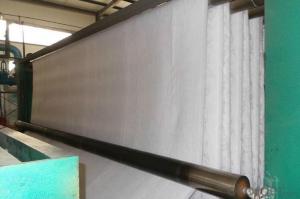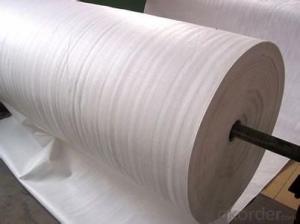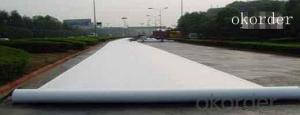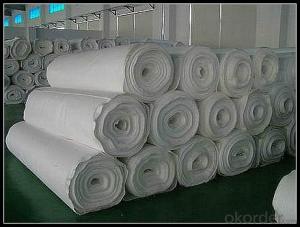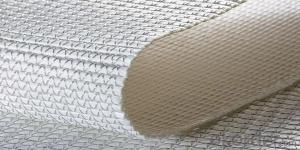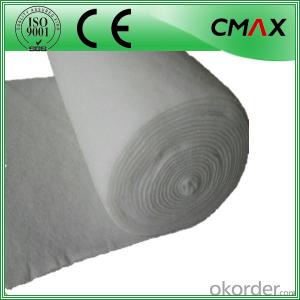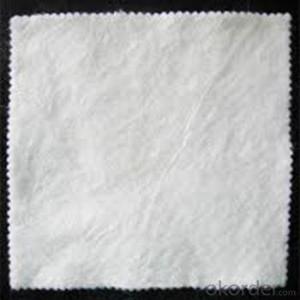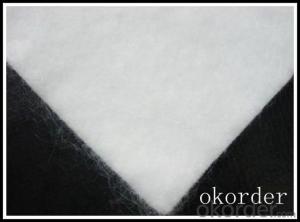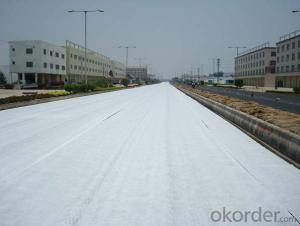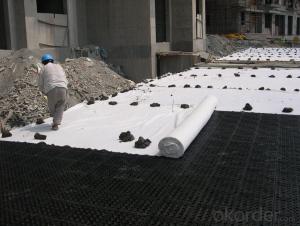Copper Geotextile Civil Non-Woven Geotextiles Industrial Nonwoven Fabric for Railway
- Loading Port:
- China main port
- Payment Terms:
- TT OR LC
- Min Order Qty:
- 1000 m²
- Supply Capability:
- 1000000 m²/month
OKorder Service Pledge
OKorder Financial Service
You Might Also Like
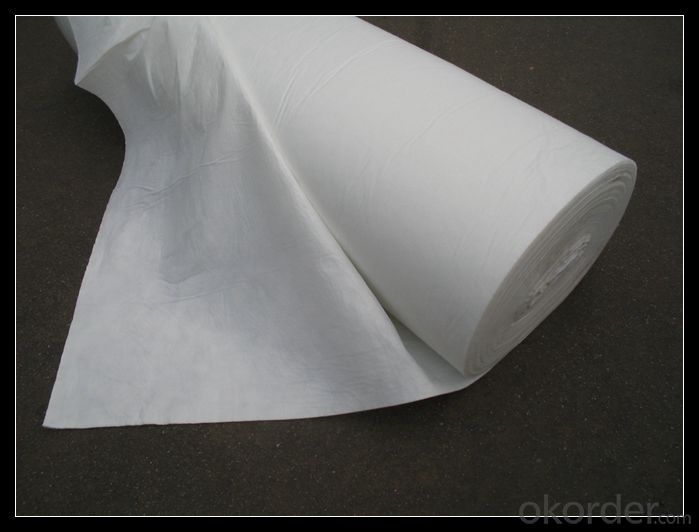
Non Woven Geotextile Introduction:
Nonwoven geotextiles are manufactured from the extrusion of polypropylene fibres which are then laid down on a manufacturing "bed" and then needle punched to entangle the fibres such that a dimensionally stable product is formed. Some additional thermal treatment is then applied to further improve the strength of the geotextile. Because of this manufacturing process non-woven geotextiles are generally best used in applications of drainage, filtration and protection
Assembling is possible at almost any weather conditions. There are no big difficulties while the laying out of the material due to the following features: material rolls are not big, which reduces transportation and storage costs as well as labor costs; the material does not water permeable; while application in humid conditions the roll weight does not change; it is not permeable for plant roots, is a good protection from gnawing animals; acid and alkali resistant, etc. the material exactly repeats the base molding and does not require any fixing and fastening joints.
Our Service
1.On a regular basis or as per your request,we entrust national testing agencies to conduct quality inspections
2. Strictly in accordance with the ISO9001-2008 international quality system standard,we monitor and manage the whole process throughout production,quality testing,and measurement to ensure product quality
3. For quality-related construction delay or substandard construction(except for damage or losses due to customer’s responsibility or irresistible natural disasters),we have refunding,replacement,and repair services.We will respond to customers’ feedbacks on quality issues within 24 hours.
After-sales service
1.In order to provide customers with comprehensive technical support,we will provide technical and other related information upon request in a timely manner.
2.In required,we will appoint specialized technicians to the construction site to give technical trainings to construction people,and offer technical guidance throughout the whole construction process.
3.For damage due to shipment and delivery,after we receive the complaint,we will check the issure through provided pictures and videos.If our responsibility is confirmed,we wil offer free replacement.
4.When the construction is completed,as your request,our technical staff may participate in the final acceptance.
FAQ:
Q: What kind of payments does jenor support?
A: T/T, L/C, Cash are accepted.
Q: Do you charge for the samples?
A: Accordeing to our company policy, the samples are free, we only charge the freight fee. And we will return the freight fee during the next order.
Q: Can you produce according to customers' design?
A: Sure, we are professional manufacturer, OEM and ODM are both welcome.
Q: Do you have other products?
A: Yes, please check the pictures:
- Q: How do geotextiles help with reinforcement of geogrid retaining walls?
- Geotextiles help with the reinforcement of geogrid retaining walls by acting as a separator between the backfill materials and the geogrids. They prevent the fine particles in the backfill from clogging the geogrids, maintaining their effective functioning. Additionally, geotextiles distribute the load evenly across the geogrids, enhancing their strength and stability.
- Q: 300g / m2 geotextile permeability coefficient is generally how much?
- Geotextile cloth short fiber geotextile and long fiber geotextile, the two geotextile permeability coefficient is basically the same. According to the requirements of the national standard 300g / ㎡ geotextile permeability coefficient for the K * (10 negative side ~ 10 negative three power), K is between 1.0-9.9 values. From the indicators can be seen 300g / ㎡ specifications of the geotextile has a good water filter, can be used for water, filter them.
- Q: Can geotextiles be used in geosynthetic clay liner applications?
- Yes, geotextiles can be used in geosynthetic clay liner applications. Geotextiles are often used as a protective barrier on both sides of the geosynthetic clay liner to enhance its performance and prevent punctures or damage. They help in retaining fine particles within the liner while allowing water to pass through, making them an essential component in geosynthetic clay liner applications.
- Q: Seepage geotextile symbol
- At present, the engineering commonly used seepage geotextile is divided into polyester staple geotextile and polyester filament geotextile two. Polyester staple geotextile identification symbol for the SNG, for example, 150g / ㎡ polyester staple geotextile can be expressed as SNG150. Polyester filament geotextile identification symbol for the FNG, for example, 200g / ㎡ of polyester filament geotextile can be expressed as FNG200. In the national standard in the seepage geotextile on the permeability of the test items are equivalent pore size O90 (95) / mm and vertical permeability coefficient CM / S two.
- Q: Can geotextiles be used in railway track construction?
- Yes, geotextiles can be used in railway track construction. Geotextiles provide various benefits such as soil stabilization, drainage, filtration, and separation. They can be used to improve the performance and longevity of railway tracks by providing reinforcement, preventing soil erosion, and reducing maintenance requirements.
- Q: How are geotextiles classified?
- Geotextiles are classified based on their functions, materials, and construction methods.
- Q: How do geotextiles help with siltation control in construction sites?
- Geotextiles help with siltation control in construction sites by acting as a barrier, preventing sediment from washing away and polluting nearby water bodies. They retain soil particles while allowing water to pass through, thus reducing erosion and maintaining the stability of the construction site.
- Q: What does geotextile 200g mean? A total of so many shops, or how many square meters shop so much ah
- Geotextile 200g is a geotextile specification 200g / m2
- Q: What are the key considerations for geotextile installation in seismic retrofitting projects?
- The key considerations for geotextile installation in seismic retrofitting projects include the selection of appropriate geotextile materials that can withstand high seismic forces, ensuring proper installation techniques to prevent slippage or failure during an earthquake, and considering the compatibility of geotextiles with other retrofitting techniques to provide a comprehensive and effective seismic upgrade. Additionally, factors like site-specific conditions, design requirements, and regulatory guidelines must be taken into account for successful geotextile installation in seismic retrofitting projects.
- Q: What are the primary applications of geotextiles?
- Geotextiles have various primary applications that include erosion control, soil stabilization, drainage systems, road construction, and filtration.
Send your message to us
Copper Geotextile Civil Non-Woven Geotextiles Industrial Nonwoven Fabric for Railway
- Loading Port:
- China main port
- Payment Terms:
- TT OR LC
- Min Order Qty:
- 1000 m²
- Supply Capability:
- 1000000 m²/month
OKorder Service Pledge
OKorder Financial Service
Similar products
Hot products
Hot Searches
Related keywords
